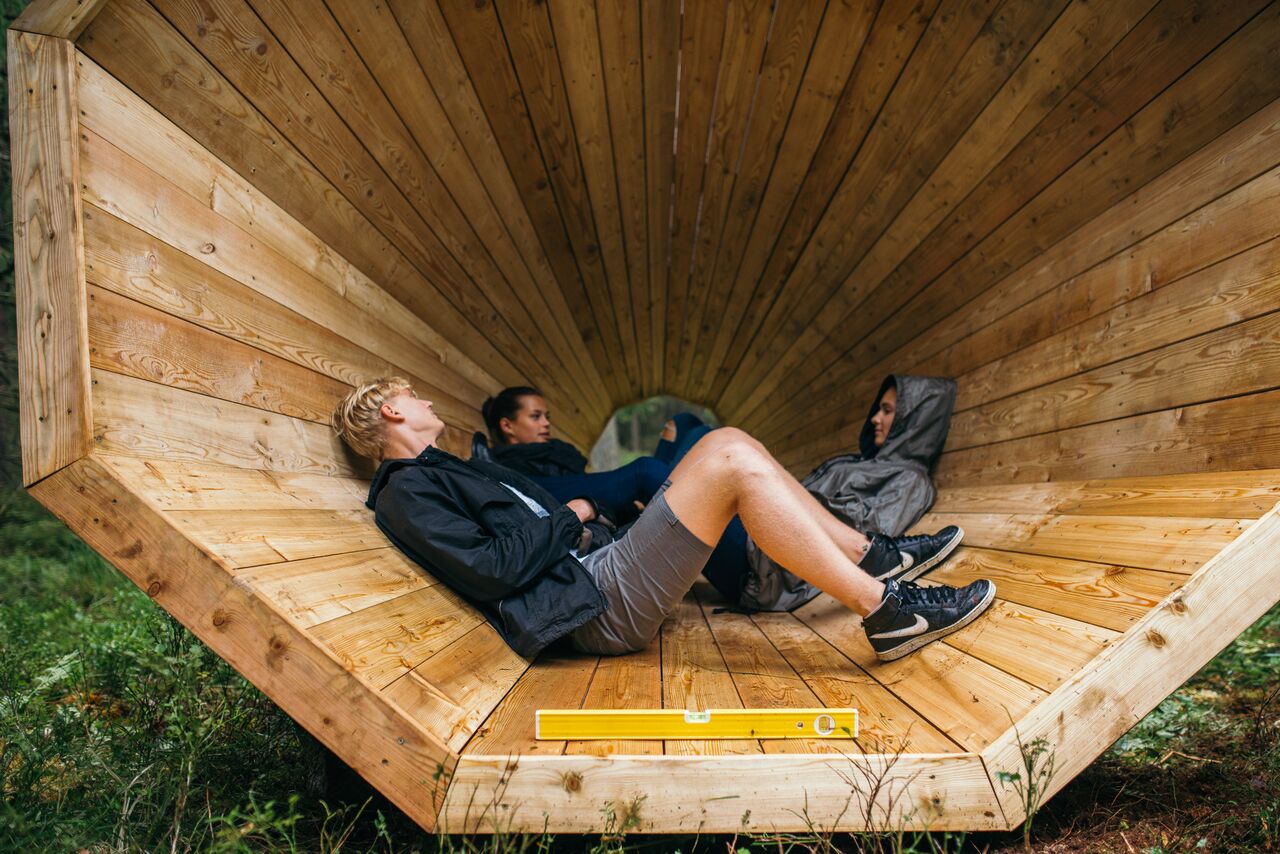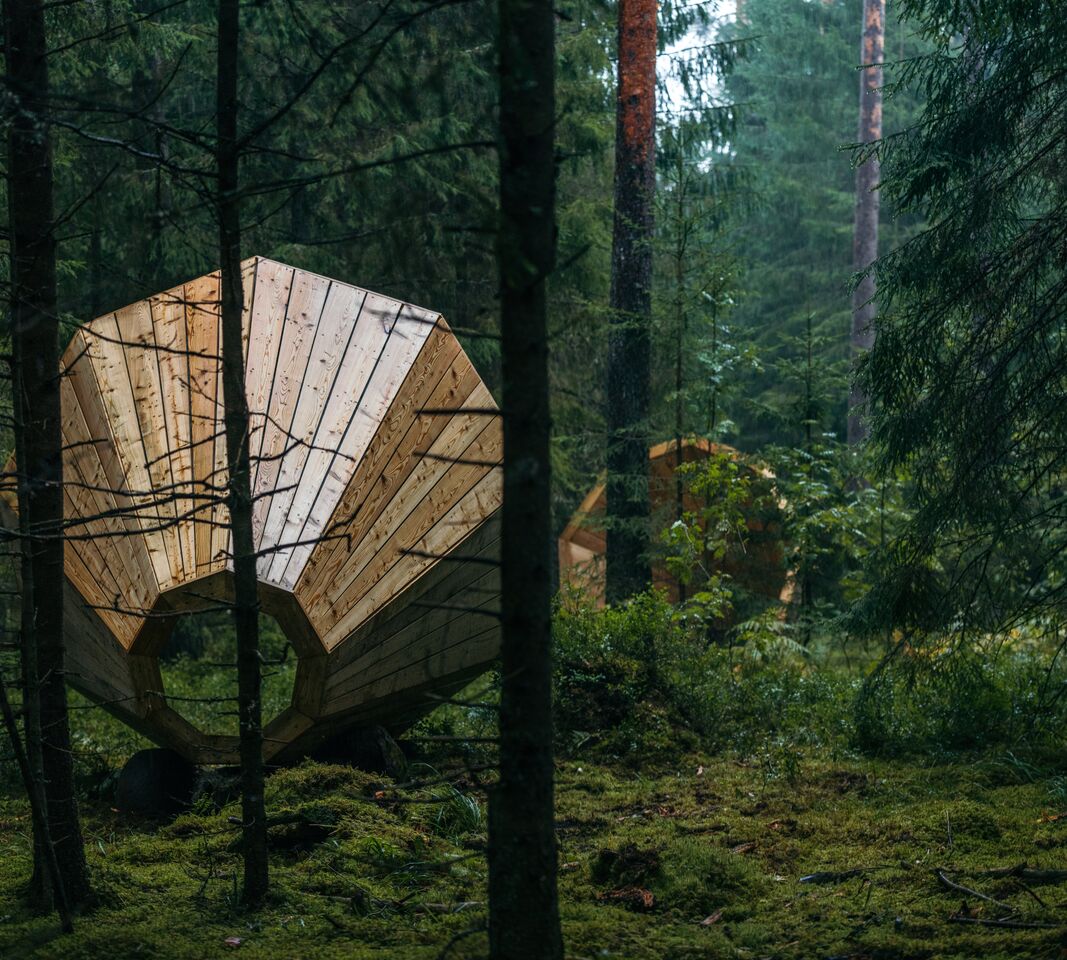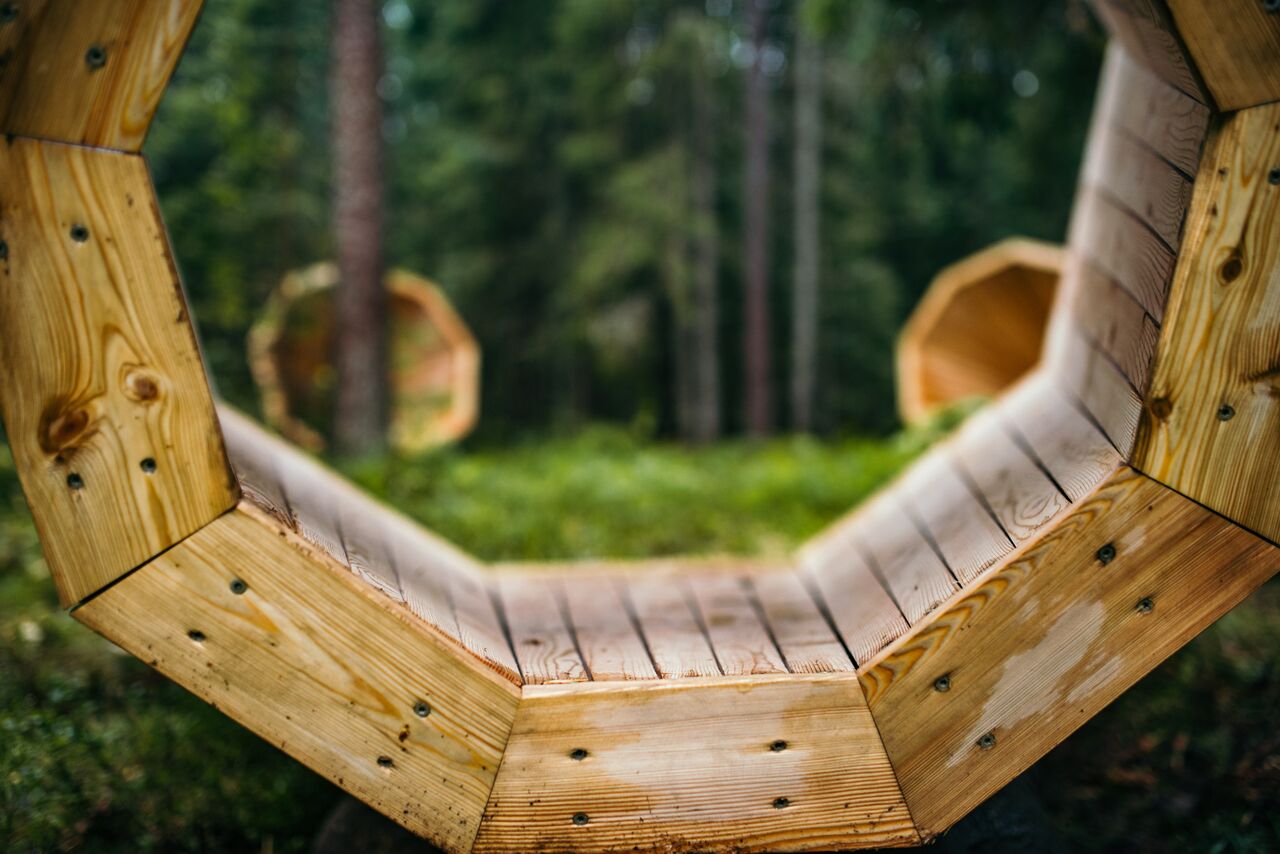 [Image: Photo by Tõnu Tunnel].
[Image: Photo by Tõnu Tunnel].
The Estonian Academy of Arts continues to produce interesting site-specific installations in the nation’s remote and often extraordinary landscapes, the most-recent example being an observation tower and staircase built amidst the sprawling Tuhu bog.
 [Image: Photo by Tõnu Tunnel].
[Image: Photo by Tõnu Tunnel].
According to the project’s accompanying text, “the design challenge was to provide a better view of the bog landscape and allow people to monitor the movement of moorland birds, raising observers above the landscape.”
 [Image: Photo by Tõnu Tunnel].
[Image: Photo by Tõnu Tunnel].
The site came with some obvious constraints: “How to design an observation tower that takes its delicate environment into account whilst adding a layer of contemporary spatial design?” the school asked.
“What kind of space would hikers and ornithologists appreciate? What are the restrictions when constructing something for a location that is flooded several times a year, where the temperature can change from +25C to -25C, easily, and which is a home to a number of protected species?”
 [Image: Photo by Tõnu Tunnel].
[Image: Photo by Tõnu Tunnel].
The piece does, admittedly, look much better in the snow, where it blends into the surrounding landscape and can even be difficult to distinguish against the quiet background; without snow, the structure looks a bit more ramshackle.


 [Images: Drone photo by Tõnu Tunnel].
[Images: Drone photo by Tõnu Tunnel].
Nevertheless, the most interesting part of the whole project is perhaps the overall educational context: the department of interior architecture at the Estonian Academy of Arts has teamed with architects b210 and Estonian Forest Management Centre to teach “a special class on small-scale buildings… focused on nature infrastructure—resulting in a number of observation towers and shelters. The purpose of the educational process is to show how considerate spatial design can add to the beauty of natural landscapes through human-scale, site-specific structures, and to advance local spatial culture.”
If some enterprising multimillionaire or ambitious school administrator is reading this, please bring this sort of collaboration here to Southern California. Observation towers for the San Andreas Fault. Desert shelters for the canyons near Joshua Tree. Acoustic listening platforms for the coast near Point Mugu.
(Previously on BLDGBLOG: Forest Megaphone).

 [Image: Photo by
[Image: Photo by  [Image: Photo by
[Image: Photo by  [Image: Photo by
[Image: Photo by 
 [Image: Photos by
[Image: Photos by  [Image: Photo by
[Image: Photo by  [Image: Photo by
[Image: Photo by  [Image: Photo by
[Image: Photo by  [Image: Photo by
[Image: Photo by  [Image: Photo by
[Image: Photo by